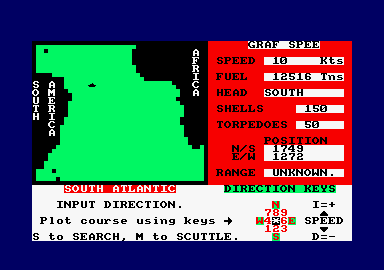[ZX Spectrum, Temptation Software]


Lieutenant Narwhal, you will take command of the Graf Spee in the South Atlantic and sink as many enemy ships as possible !
Sir, yes Sir ! When am I expected to return to base ?
Never.
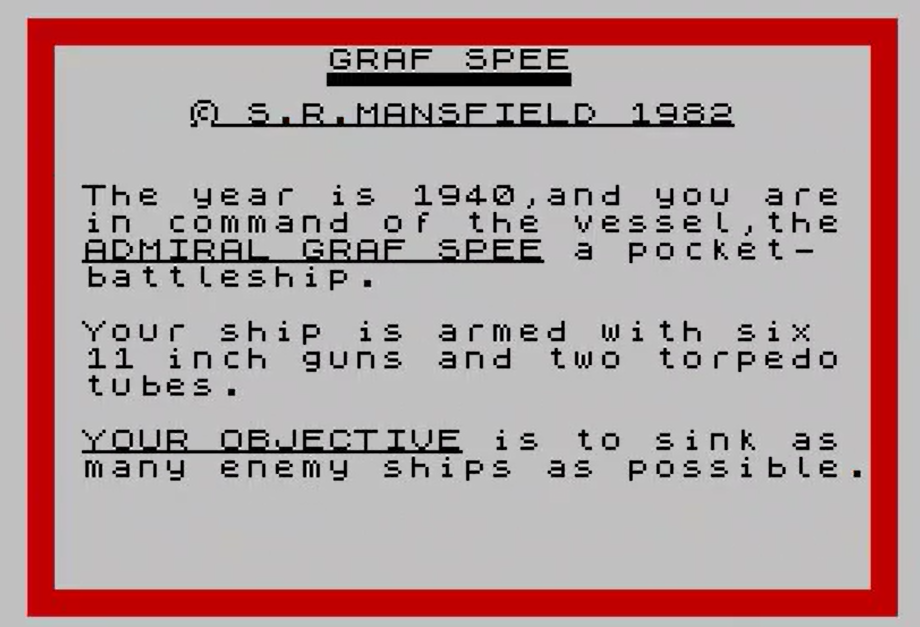
Admiral Graf Spee (also known as just Graf Spee) is a ZX81 game later ported on ZX Spectrum that starts as a really good naval strategy game with the historical rendezvous between the Admiral Graf Spee and its supply ship the Altmark on the 1st of September 1940 :
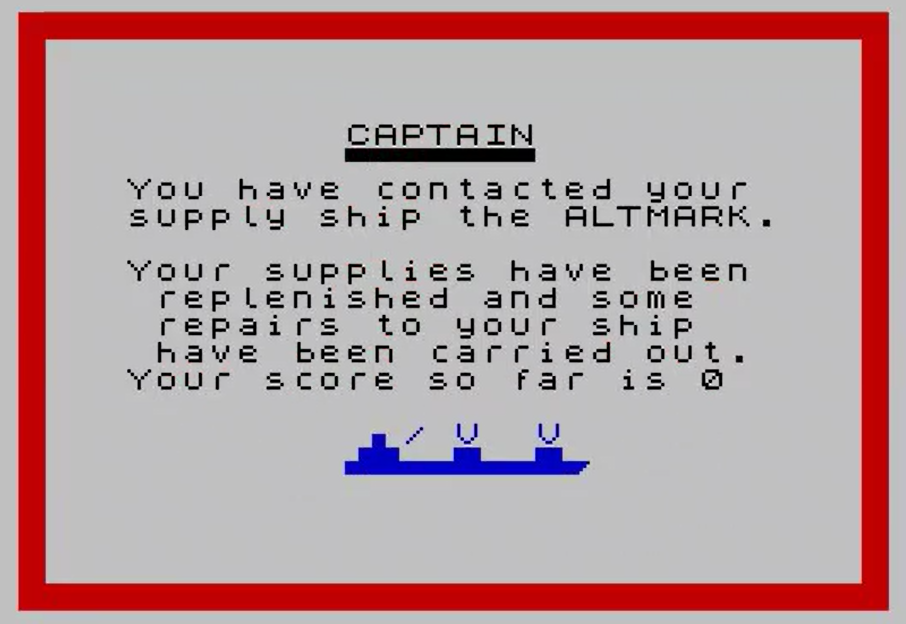
That’s the last moment the game is any good !
The game shows a map of the South Atlantic, in which black pixels occasionally appear for half a second. Those pixels represent contacts to investigate.

I immediately make haste toward the closest contact :
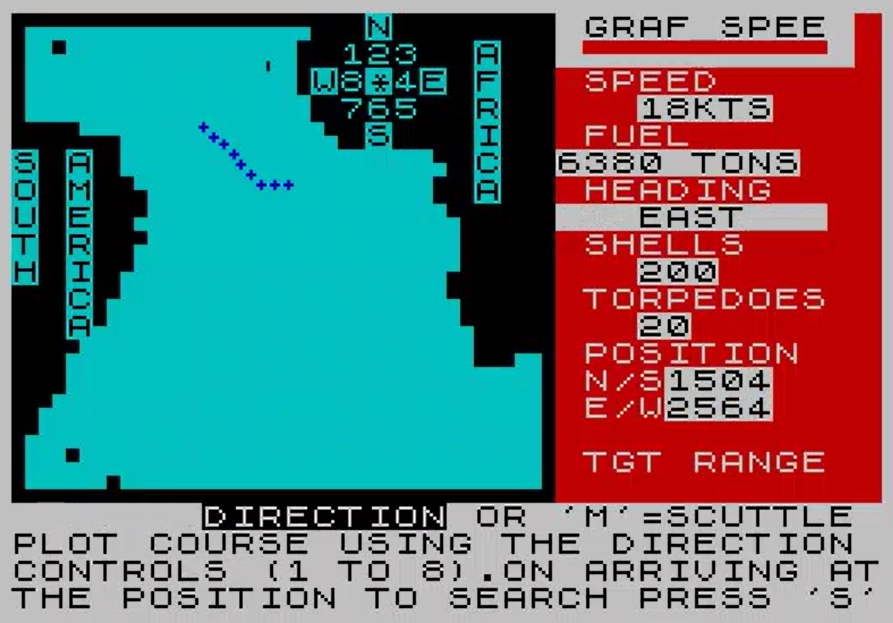
Once you find a contact, the game moves to the “tactical view” :
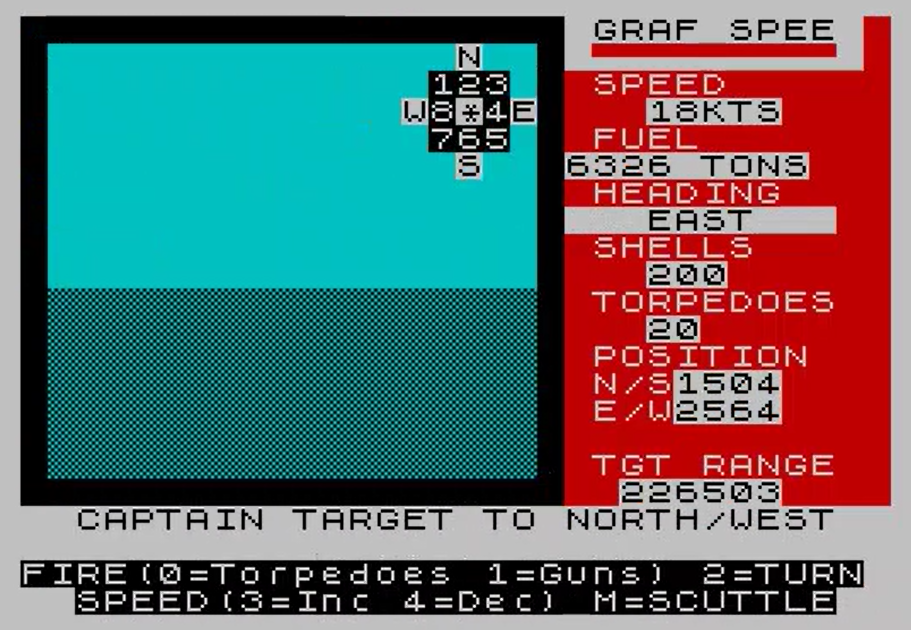
The key challenge in tactical view is controlling the ship. The game is in real-time and to give orders the player must hold the buttons long enough for the computer to acknowledge the order. By the time I manage to change my direction, I usually overshoot my target so much I need to update my direction to a new one.
Eventually, I choose to slow down to make it easier. The good news is that enemy ships don’t move at all, so the only reason I don’t move at 2 knots is that I don’t have this sort of patience.

I eventually reach my target – a merchant ship. In real-life, the merchant ship would have already surrendered, because what can you do against a fast battleship. In Graf Spee, sailors are willing to die so Germany wastes its ammunition on them !
I close the distance to 2400 yards and start blasting. The game asks me how many guns I want to shoot, from 1 to 6.

Now this question is a bit surprising, because here is a view of the Graf Spee :

Everytime I use 6 shells while my target is right in front of me, one shell buzzes through the officer mess, another through the bridge and the last one through the medical bay. The officers hate it.
In any case, the captain of the merchant ship must know something I don’t, because after shooting 42 11-inch shells, the merchant ship is still there. Granted, maybe two-thirds of my shells missed which at this range is an absolutely appalling performance from my gunnery crew. I guess the guys from the stern turret have an excuse.
Eventually, I send a torpedo and sink the enemy ship.
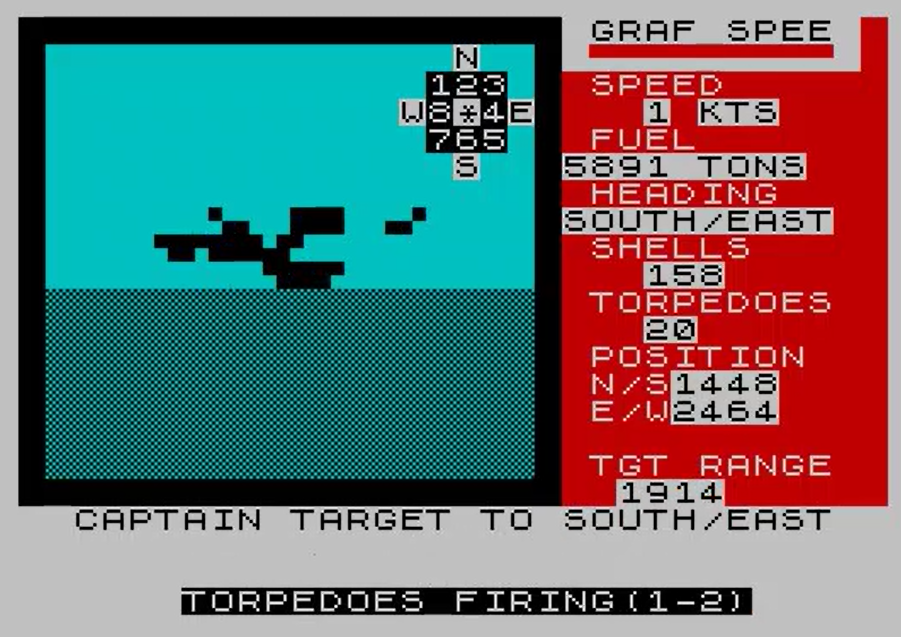
Back to the world map, I navigate to another contact :
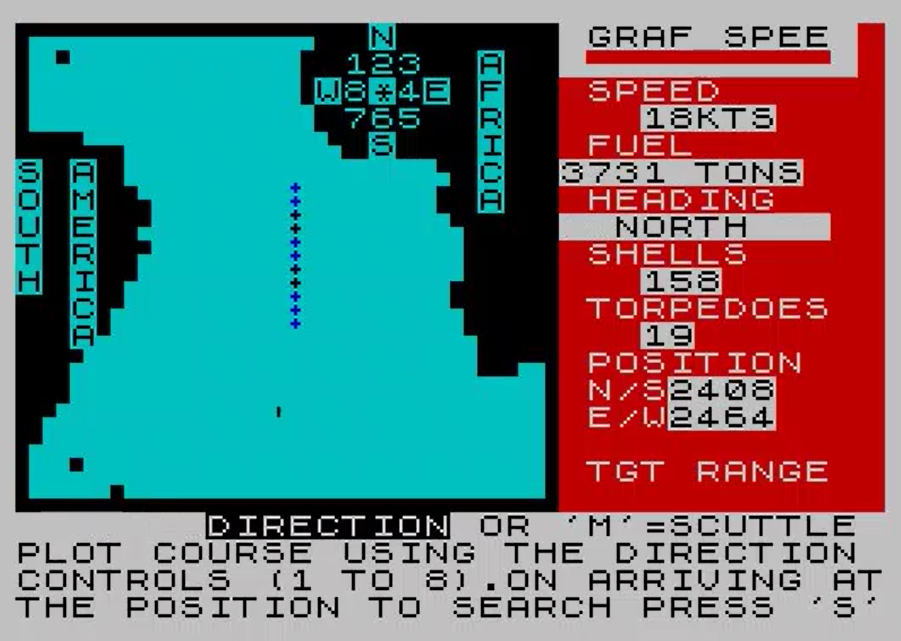
After some more gunnery incompetence, I quickly move to torpedoes, and they do the job :

Next to the ship I just sank, I meet a friend : the Altmark !

The Captain of the Altmark gives me half a refill of fuel and exactly 50 shells when I could have taken 54, which I find a bit stingy.
In any case, I start chasing new blips on the ESP radar.
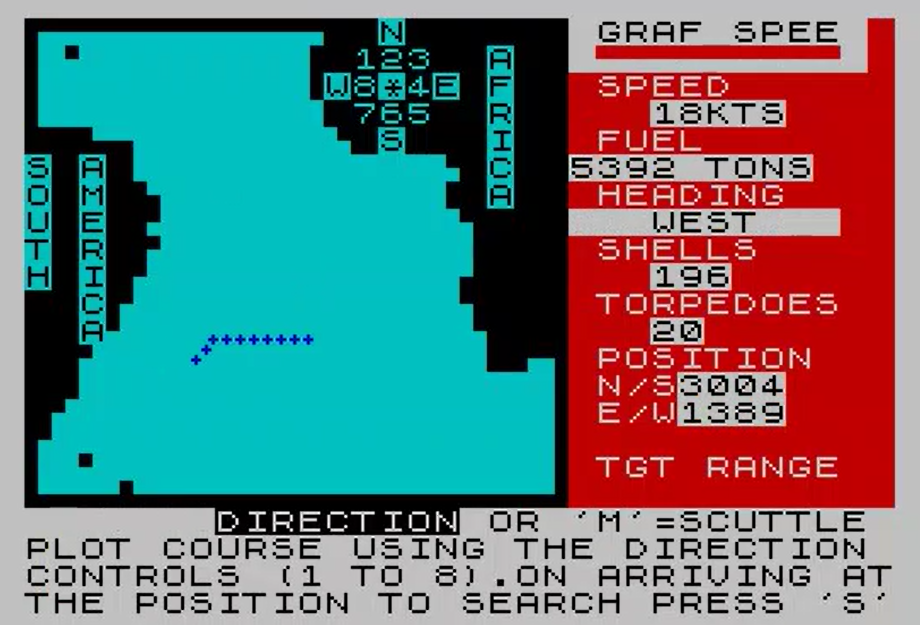
I find a smaller ship that goes down with “only” 2 torpedoes :

I then move East again toward another contact …

… hey ! That’s the Altmark again ! They found the 4 missing shells !

I take another detour where I sink a small merchant with 2 torpedoes and 18 11-inch shells shot at 900 yards, then follow up on another contact and find the Altmark once again. Let’s move to my personal Götterdämmerung.
After meeting the Altmark one last time, I chase a new contact in the North :

This time, I encounter some resistance :

The contact turns out to be an enemy warship. Cruiser ? Battleship ? I am not sure.
Remember when I complained how difficult it was to steer the ship ? Well, for the one occasion where it is important to actually steer the ship, it is made even more difficult by the fact that I cannot give orders while the “you are being shot at” animation is playing (and it is long). Of course, while the animation is playing, my ship does not stop.
Still, after some effort, I still manage to head toward the enemy ship and even shoot it a few times…

… ah ! another attack. While I am being attacked, I can’t slow down and I soon overshoot the British warship !
So now the enemy is behind me, guns blazing with an alarming regularity, and I can’t even shoot back because of course the Graf Spee can only shoot at targets right in front of her. I guess my version of the Graf Spee is using an all-forward [gun] arrangement like the HMS Nelson or the Richelieu.
Of course, I should turn, but I never get an opportunity. The British ship literally stun-locks me with its attack animation (the “water splashes”) and before I know it I reach 108% damage !
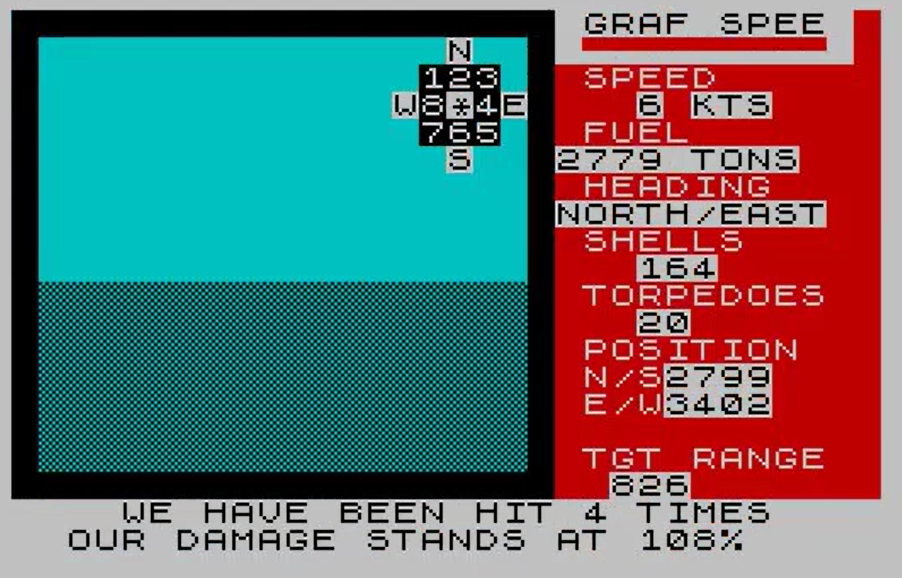
That’s the end of the Graf Spee :

Technically, I believe I could and should have escaped combat, but I really wanted the game to end.
Admiral Graf Spee is a game by Simon Mansfield published by Temptation Software. Temptation Software published several classical card games and a handful of games from other genres, including Mansfield’s two other games : Baron, a Hammurabi-clone and Dungeon of Doom, a game that is despite its name as much a RPG as Graf Spee is a wargame – so not much really.

Graf Spee was initially published on ZX81 (a 16K computer) and from my limited test the Spectrum version did not use the capabilities of the 48K computer to add any new features. Henceforth it is not surprising that the game has minimal content and neither strategy nor tactics, justifying its BRIEF status. I was not even sure whether I would cover it, but my Carrier Force article is taking longer than expected. Still, it should be next on the roster!
Addendum 09/27/2023: I found out there was an Amstrad CPC port in 1984. Here are two screenshots coming from CPCRulez. I haven’t played this version but it looks sharper.

